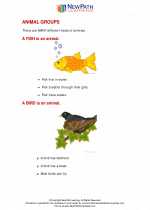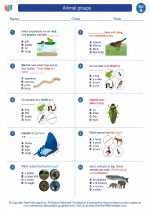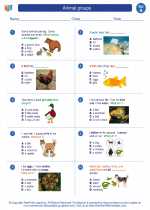Response to Stimuli
In science, a “response to stimuli” refers to how living organisms react to changes in their environment. This response can be automatic or conscious and allows organisms to adapt to different conditions in order to survive and thrive.
Types of Responses to Stimuli
There are different types of responses to stimuli, including:
- Automatic Response: This is a quick and involuntary reaction to a stimulus, such as pulling your hand away from a hot stove.
- Conscious Response: This is a more deliberate reaction to a stimulus, often involving decision-making and thought processes.
Examples of Response to Stimuli in Living Organisms
Living organisms exhibit various responses to stimuli, including:
- Plants: Plants respond to light by growing towards it (phototropism) and to touch by closing their leaves (thigmotropism).
- Animals: Animals respond to changes in temperature by seeking shelter, and to danger by fleeing or defending themselves.
- Humans: Humans respond to pain by pulling away, and to hunger by seeking food.
Study Guide
Here are some key points to remember about response to stimuli:
- Define “response to stimuli” and give examples of automatic and conscious responses.
- Explain how plants and animals respond to different stimuli in their environments.
- Provide examples of how humans respond to various stimuli in their daily lives.
- Discuss the importance of response to stimuli for the survival of living organisms.
Understanding how living organisms respond to stimuli is essential for comprehending their behavior and interactions with the environment. Be sure to review the examples and study guide to solidify your understanding of this topic!
.◂Science Worksheets and Study Guides First Grade. Animal groups
Study Guide Animal groups
Animal groups  Worksheet/Answer key
Worksheet/Answer key Animal groups
Animal groups  Worksheet/Answer key
Worksheet/Answer key Animal groups
Animal groups  Worksheet/Answer key
Worksheet/Answer key Animal groups
Animal groups  Vocabulary/Answer key
Vocabulary/Answer key Animal groups
Animal groups 

 Worksheet/Answer key
Worksheet/Answer key
 Worksheet/Answer key
Worksheet/Answer key
 Worksheet/Answer key
Worksheet/Answer key
 Vocabulary/Answer key
Vocabulary/Answer key

The resources above cover the following skills:
LIFE SCIENCE
From Molecules to Organisms: Structures and Processes
Design a solution to a human problem by using materials to imitate how plants and/or animals use their external parts to help them survive, grow, and meet their needs (e.g., outerwear imitating animal furs for insulation, gear mimicking tree bark or shells for protection).